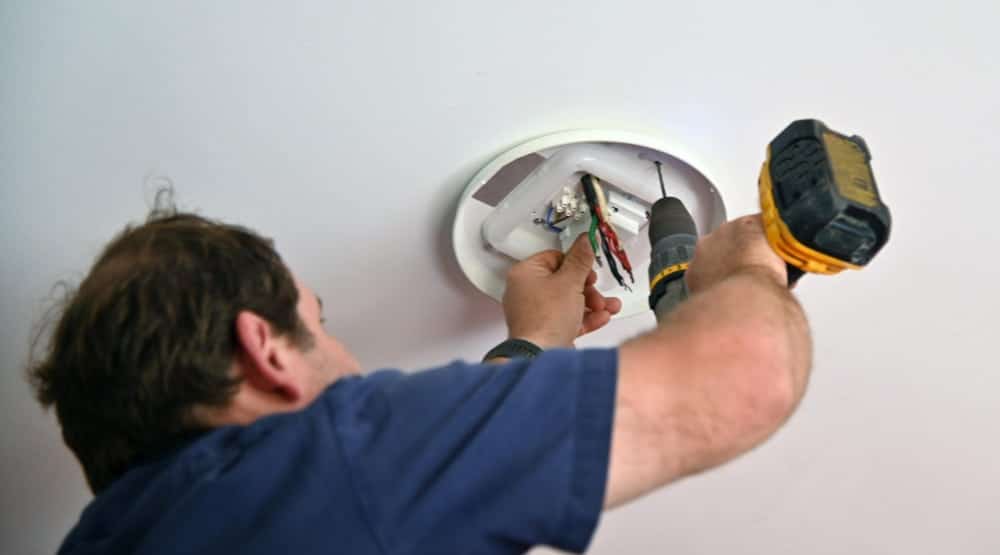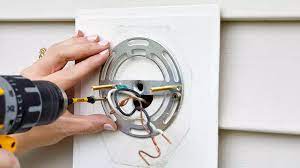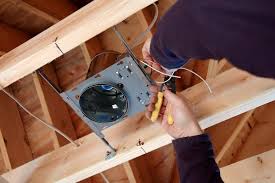
Introduction
Fixture installation plays a central role in shaping the usability, safety, and aesthetics of both residential and commercial spaces. Fixtures are the tangible components that bring architectural and design concepts to life. Whether you are constructing a new building, remodeling an old home, or upgrading specific rooms such as bathrooms and kitchens, correctly selecting and installing fixtures is critical to the success and longevity of your project.
This comprehensive guide is crafted for a diverse audience, including homeowners seeking DIY solutions, licensed electricians and plumbers, interior designers, general contractors, and even real estate developers. With an emphasis on detailed technical instruction, compliance with safety codes, and integration with modern smart systems, this guide ensures that readers are fully equipped to handle every aspect of fixture installation.
Defining Fixtures in Modern Construction
In the context of architecture and construction, a fixture is a device or fitting permanently or semi-permanently attached to a structure. Fixtures serve functional roles—such as providing light, water, ventilation, or storage—and often contribute to the overall aesthetic theme of the space.
Common examples include:
• Electrical: Chandeliers, recessed lights, track lighting, wall sconces, outlets, and switches.
• Plumbing: Toilets, bathtubs, sinks, faucets, showerheads, bidets.
• HVAC: Thermostats, ceiling fans, heating vents.
• Built-in Elements: Vanities, cabinetry, shelving, range hoods.
• Multimedia: Built-in speakers, security cameras, smart displays.
Fixtures differ from fittings or appliances in that their removal usually involves structural alteration or utility disconnection.
Categories of Fixtures and Their Applications
Residential Fixtures: Used in homes and apartments, these include decorative lighting, bathroom and kitchen installations, smart thermostats, and ventilation fans.
Commercial Fixtures: Utilized in offices, retail spaces, hospitals, and hotels. These involve heavy-duty lighting, automatic faucets, commercial-grade sinks, and surveillance equipment.
Industrial Fixtures: Designed for warehouses, manufacturing plants, and laboratories, including high-capacity light fixtures, chemical-resistant sinks, and fire safety installations.
Each environment has specific codes and design requirements that influence fixture choice and installation techniques.
Pre-Installation Planning and Site Assessment
Before a single tool is picked up, extensive planning must occur:
- Blueprint Analysis: Review floor plans and MEP (mechanical, electrical, plumbing) diagrams.
- Load-Bearing Considerations: Determine structural capabilities for ceiling-mounted or wall-mounted fixtures.
- Utility Mapping: Trace electrical wiring, water supply lines, and drainage systems.
- User Requirements: Align fixture placement with functional and ergonomic needs.
- Design Consistency: Ensure finishes and styles match the interior design.
Tools and Materials Checklist for Fixture Installation
A robust toolkit ensures efficiency, accuracy, and safety during installation:
Electrical Tools:
- Multimeter
- Circuit tester
- Wire cutter/stripper
- Electrical fish tape
- Junction boxes and wire nuts
Construction Tools:
- Power drill and bits
- Stud finder
- Level and plumb bob
- Ladder and scaffolding (for high installations)
- Safety goggles, gloves, masks

Understanding Building Codes and Compliance
Compliance with national and local codes is legally required and ensures safety:
• NEC (National Electrical Code) for electrical work
• UPC (Uniform Plumbing Code) or IPC (International Plumbing Code)
• ADA Compliance for accessibility
• Fire Safety Regulations for smoke detectors, fire-rated walls, etc.
• Permit Requirements: Depending on the project scope, municipal permits may be required
Failure to comply can lead to costly corrections, fines, or invalidated insurance claims.
Comprehensive Installation Process (General Framework)
- Power or water shut-off
- Space measurement and template marking
- Fixture unpacking and inspection
- Sub-surface preparation (wall plates, brackets, water stubs)
- Wiring or plumbing connection
- Fixture mounting and alignment
- Sealant or caulk application (where applicable)
- Final tightening and securing
- Operational testing
- Clean-up and debris removal
Electrical Fixture Installation (Advanced Guide)
Detailed steps for a ceiling light or fan:
- Shut off breaker and label circuit
- Confirm absence of voltage using a multimeter
- Prepare box by securing crossbar bracket
- Connect ground (green/bare to box ground), neutral (white to white), and hot (black to black)
- Support fixture during wiring using a helper or hook
- Tighten screws and install shade or blades
- Reenergize circuit and verify operation
Wall, Ceiling, and Structural Fixtures
Heavy or large fixtures require special attention:
- Use toggles, molly bolts, or lag bolts for drywall or concrete
- Reinforce mounting points with plywood or framing
- Pre-drill pilot holes
- Use laser levels for precise alignment
- Ensure load capacity does not exceed manufacturer recommendations

Safety Standards and Regulatory Guidelines
- Only certified products should be used (UL-listed, CSA-approved, etc.)
- Follow OSHA standards for construction environments
- Always use GFCI (Ground Fault Circuit Interrupters) in wet areas
- Ventilate during adhesive or sealant use
- Isolate work zone from other trades during installation
Common Installation Challenges and Expert Solutions
- Uneven Walls: Use shims or adjust brackets.
- Faulty Wiring: Rewire junction box and use continuity testers.
- Leaking Connections: Disassemble, reseal threads, and retighten.
- Incorrect Mounting Height: Recalculate standard heights: 30–36″ above counters for lights, 18–20″ for towel bars.
DIY Fixture Installation: Pros, Cons, and Techniques
Advantages:
- Cost-effective
- Schedule flexibility
- Satisfaction from self-reliance
Disadvantages:
- Safety risk
- Limited tools and experience
- Code violations
Techniques:
- Always document wiring before disassembly
- Use labeled bags for screws and parts
- Follow instructional videos from verified sources
When and Why to Hire a Professional
Involves structural modification
Requires electrical panel upgrades
High-end or smart fixtures
Plumbing rerouting or drain system modification
Warranty or insurance coverage depends on professional installation

Post-Installation Testing and Quality Checks
• Conduct final inspection for level, stability, and functionality
• Use circuit testers for all outlets and switches
• Pressure test plumbing lines
• Evaluate visual appeal and placement accuracy
• Record installed model numbers for future maintenance
Maintenance Protocols for Long-Term Performance
- Monthly cleaning of exposed surfaces
- Annual tightening of mounting hardware
- Periodic replacement of seals and gaskets
- Inspect electrical connections every 3–5 years
- Replace outdated fixtures with energy-efficient models
Troubleshooting Malfunctioning Fixtures
- Flickering lights: Check for loose wires, switch faults
- Low water pressure: Clean aerators, inspect shut-off valves
- Wobbling ceiling fans: Balance blades and check mounting bracket
- Persistent leaks: Replace washers, tighten fittings
Sustainable and Energy-Efficient Fixture Options
- LED lighting fixtures with low wattage consumption
- Low-flow faucets and showerheads
- Dual-flush toilets
- Smart home systems for automated control and monitoring
- Materials: Recycled metal, glass, sustainable wood
Innovations in Fixture Design and Smart Home Integration
- Touchless faucets with motion sensors
- App-controlled lighting and fan systems
- Voice-activated smart fixtures (Alexa, Google Assistant)
- Integrated lighting with HVAC sensors
- Modular fixture designs for easy upgrades
Electrical Wiring Standards and Safety Guidelines
- Always follow NEC (National Electrical Code) or local code standards.
- Use appropriately rated circuit breakers and fuses.
- Label circuits clearly.
- Avoid overloading circuits or using undersized wires.
- Ensure all connections are insulated and secured.
Conclusion and Final Recommendations
Successful fixture installation requires a blend of technical knowledge, practical skill, code compliance, and aesthetic awareness. Whether opting for DIY or hiring professionals, planning ahead and understanding every layer of the process guarantees better results and increased property value. As technology and sustainable practices evolve, so too do the methods and materials of fixture installation. Make informed decisions, prioritize safety, and regularly update your fixtures to keep your space both functional and future-ready.

